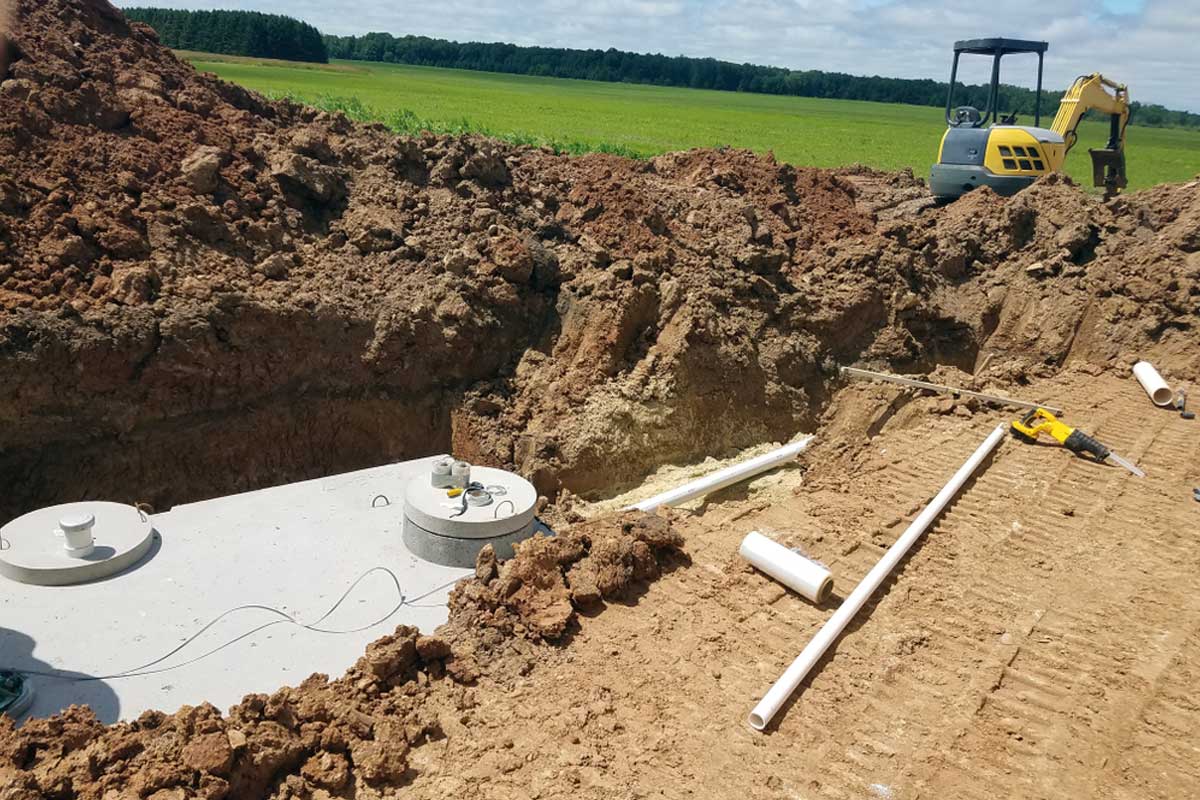Certain aspects of homeownership are hidden away until they need attention. Septic systems are just one of those essential, but often neglected parts of a home. We tend to think of it as a convenience and assume that it will do its job with no maintenance or concern. But, just like every other system, septic tanks will have a lifespan, and eventually, they will need replacement.
Cost of replacing the septic tank can be a significant financial burden for homeowners who aren’t prepared. The total price is determined by numerous aspects, which is why it’s crucial to plan for the new system.

Understanding the true cost of replacing tanks involves weighing a variety of aspects that go beyond the obvious cost amount. It is not merely about replacing the old tank with a brand new one. In fact, many components and services make up the overall expense. Costs are charged at every step of the process, including getting permits, employing professionals, and even excavation and construction.
One of the major factors to consider is the septic tank replacement price, which includes the cost to set up a septic tank and leach field. The cost of a new tank can vary significantly depending on the size and materials of the tank, and the difficulty of installation. The cost can be affected by your location the local regulations, as well as the soil conditions. You should consult with experts from septic systems who will evaluate your needs and give you an accurate estimate. Experts will take into consideration aspects like the size and shape of the leach fields and give an accurate estimation of your total costs of your septic system.
Aside from the tank itself another major expense is the leach field or drainfield. It is essential for the treatment and distribution of water. Costs for replacing a leach field that is damaged or is not working can be significantly increased by careful planning. When calculating the total cost, it is essential to account for things like the size and composition of the leach fields, accessibility and soil composition.
In addition to the actual costs homeowners must also take into account the intangible expenses associated with septic system replacement. The process may disrupt your daily life, requiring you to temporarily vacate your property or limit the use of water during the installation. You should factor in these inconveniences when planning your project since they could affect your daily routine and bring additional costs like accommodations or changes to your routine.
It is also crucial to recognize the need for proper maintenance and care of septic systems is vital to prolong their lives and reduce the risk of premature replacement. Neglecting maintenance tasks may cause more serious problems in the future, including damages to the drainfield, or breakdown of the tank. It is recommended to include septic system expenses in your budget. This will enable you to save money.
You may be aware that determining the total cost of replacing a septic tank is not an easy job. It requires careful consideration of various elements, ranging from size and construction of the tank to the complexity of the installation as well as the state of the leach field. The place of your house and local regulations could influence the price. It is important to consult experts with experience in replacing septic systems.
If you are considering replacing your septic, you may be stunned by the hidden expenses. It’s crucial to learn about these hidden costs before making your decision. For more information, click septic system cost
The hidden costs associated with the replacement of septic systems are:
The costs of inspections and permits. Before beginning work on the replacement of your septic tank, you will need to get permits from the local authorities. These permits are likely to be costly and you could be charged extra for inspections.
The costs of excavation and removal. The old septic system will need to be excavated and removed before the new system is installed. This could be an extremely costly process, particularly when it’s difficult for the user to access the old system.
The expense of backfilling and the grading. Once the old system has been gone, it is essential to grade and fill the hole. This ensures that the new system drains in the correct way.
Cost of landscaping. You may have to landscape the area after installation of the new system to keep it neat and tidy. It’s a lot of work when you decide to hire a professional landscaping company.
Budgeting for a septic replacement should include hidden costs. You’ll avoid unpleasant surprises in the future by planning ahead.
Eco-friendly septic systems can be a fantastic option for homeowners who have only a small budget. They are cost-effective and eco-friendly, since they reduce water pollution and minimize runoff. These eco-friendly solutions are increasingly inexpensive and readily available. They’re the best option for those who wish to reduce their environmental footprint and not break the bank. While there might be upfront costs to switching to a green system, these additional costs can be more than compensated in the form of long-term savings. Going green isn’t just a trend; it’s an essential life-style change that everyone should contemplate if they’re determined to protect our planet for the generations to come. It gives you peace of mind that you are contributing to the world community. It will also ensure that your property is operating effectively, with less work and lower costs per month.
